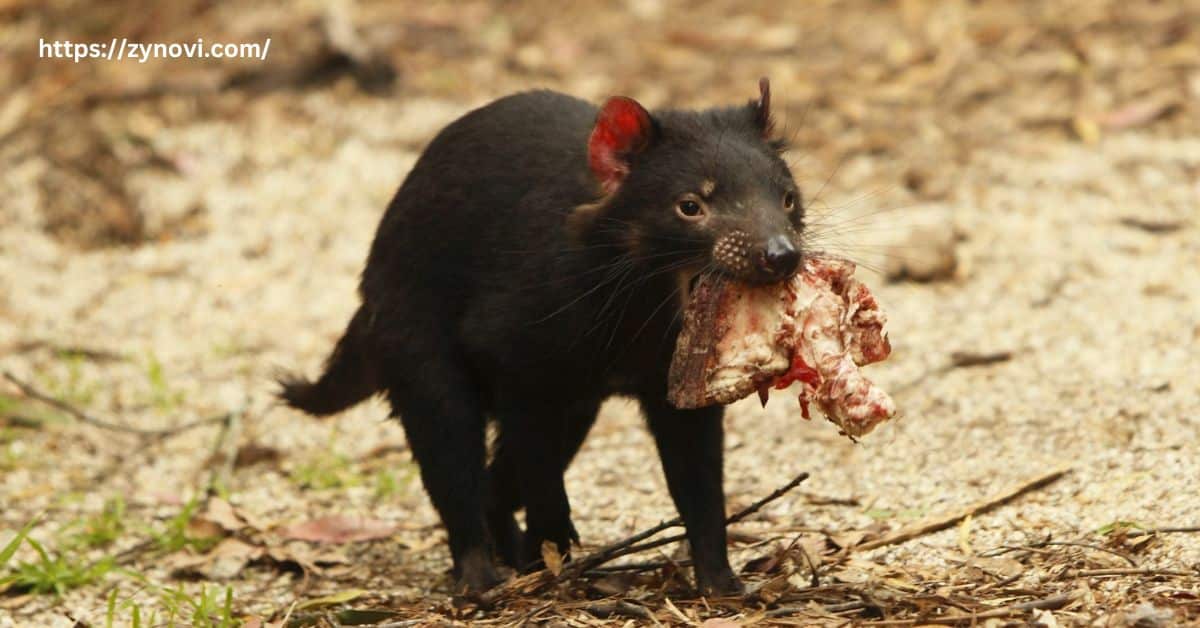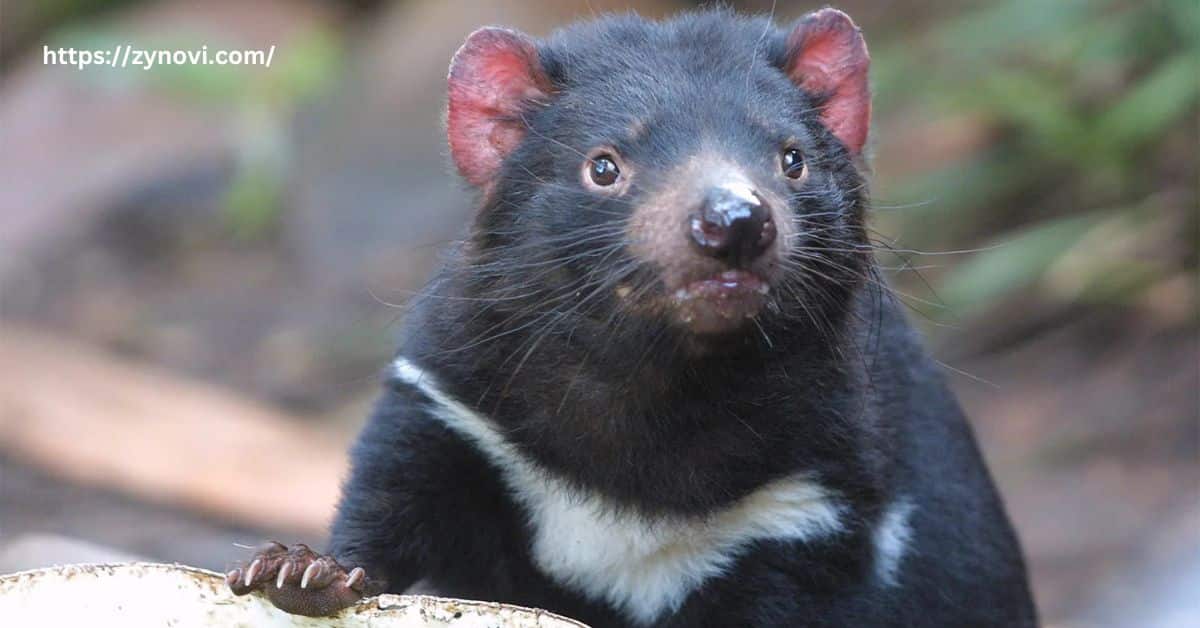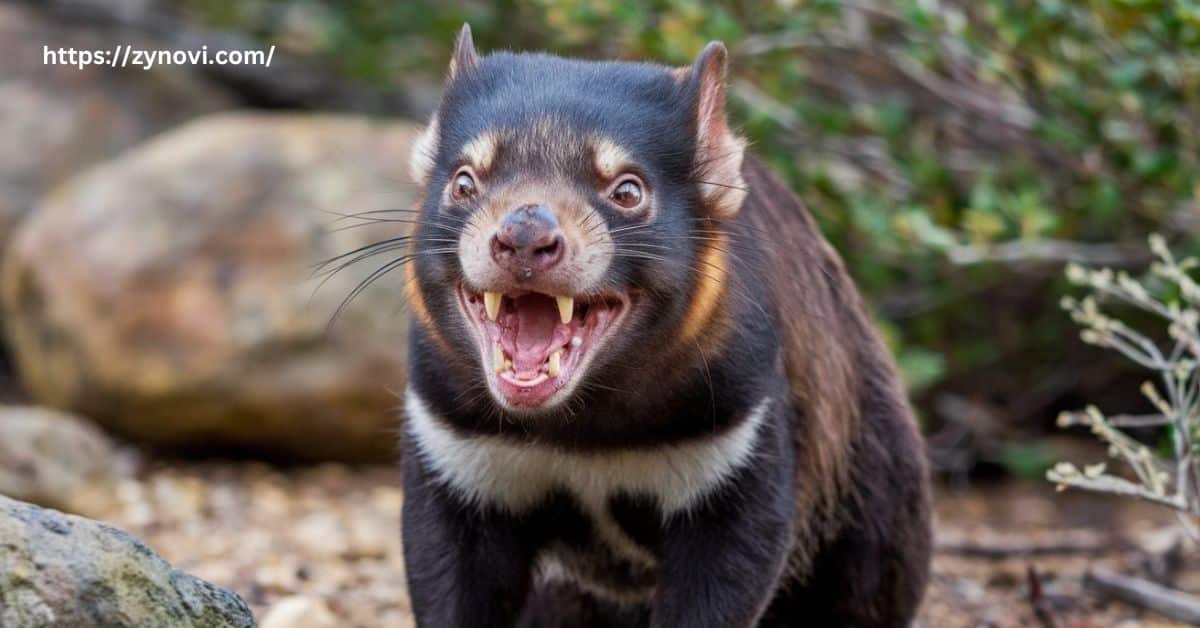Do Tasmanian Devils Attack Humans? Tasmanian devils hardly attack humans, their natural instinct is to shy and away from human interaction.
If you’ve ever wondered about these fascinating creatures, you’re not alone. With their wild, fierce reputation and nocturnal habits, Tasmanian devils can seem intimidating. But the truth about their interactions with humans might surprise you.
While their powerful jaws and aggressive vocalizations can be alarming, these animals are not the threat they might appear to be. In this article, we’ll look out the behavior of Tasmanian devils, their true nature, and what you need to know to stay safe. Keep reading to uncover the facts behind these misunderstood marsupials!
Discovering Tasmanian Devils
The Tasmanian devil is a unique marsupial found only in Tasmania, Australia. Known for its fierce temperament and iconic screeching vocalizations, this nocturnal creature is one of the few remaining members of the Dasyuridae family of carnivorous marsupials.
Physical Characteristics
Here is the physical characteristics of Tasmanian Devils:
| Physical Characteristic | Description |
|---|---|
| Size | Tasmanian devils are relatively small, about the size of a large housecat, typically weighing between 8 to 14 kg (18 to 31 pounds). |
| Appearance | They are known for their black fur with distinctive white patches on their chest and rump. |
| Teeth and Jaws | Their sharp teeth and powerful jaws allow them to tear through tough carcasses. The strong jaw pressure (around 550 psi) enables them to crush bones and consume small prey like birds, frogs, and the remains of larger animals. |
Behavior and Habits
Here’s the expanded version with 1-2 lines for each point:
- Nocturnal Activity:
Tasmanian devils are primarily nocturnal, meaning they are most active at night.- During these hours, they search for food, often scavenging carrion, but they will also hunt small animals such as birds, frogs, and fish when food is scarce.
- Their nocturnal habits help them avoid direct competition with other predators.
- Vocalizations:
- Tasmanian devils are known for their loud, aggressive vocalizations, which include screeches and growls.
- These sounds are essential for communication, particularly during feeding times when they may become territorial or feel threatened.
- These vocalizations can also help establish dominance among devils when competing for resources.
Do Tasmanian Devils Pose a Threat to Humans?

Despite their aggressive displays and sharp teeth, Tasmanian devils are not a significant threat to humans. Most of their aggressive behaviors are reserved for their interactions with other animals or in self-defense. But, as with all wild creatures, there are important nuances to their potential for aggression.
Defensive Behavior
Tasmanian devils are not innately inclined to attack humans. Instead, their aggression typically comes from feeling threatened or cornered. If approached too closely, a Tasmanian devil might display defensive bites or lunge defensively as a means of protection.
- Protective Instincts: They may also show aggression if protecting food sources or their young. If a human or animal gets too close, they may react in a way that’s more about safeguarding themselves than seeking out confrontation.
When Do Tasmanian Devils Show Aggression?
In the wild, most incidents of wildlife aggression are based on territory or feeding behavior. Tasmanian devils are not territorial about their home range, but they can become aggressive when resources (like food) are scarce or contested.
- Feeding Frenzy: In moments of high competition for food, such as when multiple devils are scavenging a carcass, defensive lunging and aggressive vocalizations may occur, but they are rarely aimed at humans.
- Human Interactions: In wildlife encounters, Tasmanian devils are typically wary of humans. They will avoid contact if given the opportunity, though they may show curiosity if they are not disturbed.
Misconceptions vs. Reality
Many of the fears surrounding Tasmanian devils stem from exaggerations or misconceptions. Movies and cartoons often portray these creatures as vicious monsters with a taste for human flesh. In reality, Tasmanian devils are shy and solitary animals that rarely pose a risk to people.
- Behavioral Misunderstandings: Their vocalizations, which can sound frightening, are simply part of their communication with other devils, especially during feeding. They do not use these sounds to warn or threaten humans.
Recorded Incidents of Attacks
There have been very few recorded incidents of Tasmanian devils attacking humans. In most cases, these attacks occurred when people either got too close to the animal or unknowingly threatened it, provoking a defensive reaction. However, such incidents are extremely rare.
Tasmanian devils generally avoid human contact and are more likely to retreat into their natural habitat when encountering unfamiliar figures. Human-wildlife interactions with Tasmanian devils are typically low-risk due to their naturally shy and cautious nature.
Why Tasmanian Devils Rarely Attack Humans

The Tasmanian devil’s fear of humans and natural instincts make it highly unlikely for them to initiate an attack. Their typical response to a potential threat is to flee rather than fight. Several factors contribute to this behavior:
Natural Shyness and Solitary Behavior
- Solitary Creatures: Tasmanian devils do not live in large packs like wolves or hyenas. They are mostly solitary, only coming together to mate or when resources are abundant. This solitary nature makes them less likely to feel comfortable with human interactions.
- Fear of Humans: Wild animals, particularly those that are scavengers, tend to avoid humans. Tasmanian devils are not aggressive predators but opportunistic feeders that would rather run than confront a potential threat.
Lack of Predatory Instinct Toward Humans
Tasmanian devils do not possess the predatory instincts toward humans that some other carnivores might have. Their diet mainly consists of carrion, such as the remains of dead animals, and small prey like birds and frogs.
Humans are simply too large to be viewed as a food source for them. While they might scavenge from human activities, such as rummaging through trash or garbage, they are not inclined to actively hunt humans in any way.
Human Encroachment and Habitat Protection
As Tasmania’s native endangered species, Tasmanian devils are under threat from habitat loss and Devil Facial Tumor Disease (DFTD).
The threat of habitat disruption caused by human development and urbanization has led to efforts to keep their natural habitat intact.
When wildlife encounters occur in conservation areas or reserves, safety precautions ensure that both humans and devils avoid unnecessary contact.
How to Stay Safe Around Tasmanian Devils

While Tasmanian devils are not inherently dangerous to humans, they can become defensive if they feel threatened. Here are a few tips for safe interactions with these remarkable creatures:
- Keep a Safe Distance: If you encounter a Tasmanian devil in the wild, maintain a respectful distance. These animals are not interested in engaging with humans unless provoked.
- Avoid Cornering or Approaching: Handling or cornering a Tasmanian devil is a sure way to trigger defensive aggression. Always allow them an escape route.
- Observe Their Behavior: Watch for signs of agitation, such as growling, hissing, or lunging. These signals indicate that the animal feels threatened and is likely to defend itself.
- Stay Quiet: Sudden movements or loud noises can startle these animals and provoke aggression. Keep calm and avoid disturbing their feeding activities or territorial displays.
Final Verdict
Tasmanian devils do not attack humans. They are typically shy, solitary, and prefer to avoid contact with people. The fear-driven misconceptions surrounding their aggression are largely unsubstantiated. Human-wildlife interactions are generally safe, provided you respect their natural habitat and give them space.
While their aggressive behaviors during feeding or when threatened or cornered may appear intimidating, they are simply responding to perceived danger rather than hunting humans. By understanding their protective instincts and acting responsibly during encounters, humans can coexist safely with this fascinating species.
FAQs
Are Tasmanian devils nice to humans?
Tasmanian devils are generally shy and avoid humans, preferring to keep their distance.
Can a Tasmanian devil hurt a human?
While rare, Tasmanian devils could bite if threatened, but they are not a significant threat to humans.
Are Tasmanian devils aggressive towards people?
Tasmanian devils are not naturally aggressive towards humans; their aggression is typically defensive when cornered or provoked.
Can a Tasmanian devil be a pet?
Tasmanian devils are wild animals and are not suitable to be kept as pets due to their complex behaviors and dietary needs.
Conclusion: Do Tasmanian Devils Attack Humans?
In conclusion, Tasmanian devils do not actively seek out human contact or attack people under normal circumstances. Their aggressive behavior is almost always defensive, stemming from their territorial nature or their fear of humans. Although their vocalizations and strong bite might seem threatening, they are more a product of communication and survival instincts than hostility towards humans.
Conservation efforts are crucial to the survival of these endangered species, and it’s our responsibility to respect their habitats and behaviors. With proper precautions, wildlife encounters with Tasmanian devils can be both educational and safe, giving us a chance to appreciate one of the most unique and resilient creatures in the world.









